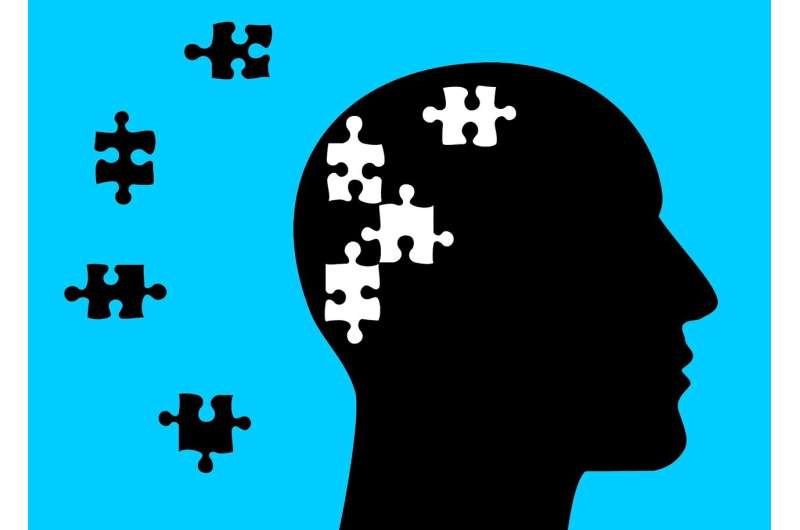
After decades of failure in Alzheimer’s disease research, scientists are buoyed by new findings that could mark a turning point in the field, offering hope that treatment may someday slow the grim deterioration of the brain.
The data, published in the prestigious New England Journal of Medicine and presented to applause at a sold-out conference in San Francisco last week, showed a substantial reduction in damaging brain plaques and some modest slowing of cognitive decline in patients with early disease.
It’s just one study. It’s not known whether, over time, the positive results will persist—or vanish.
But it marks the first time that a drug is proven to alter the underlying biology of the disease and slow its deadly trajectory, setting the stage for progress against one of medicine’s most intractable problems.
“This is not going to be a cure for Alzheimer’s disease. It’s not a drug that will be for all patients,” said neurologist Dr. Gil Rabinovici of the University of California, San Francisco’s Memory and Aging Center.
“This is really just a foothold,” he said. “It’s our first successful attempt to intervene in this complicated biology, and meaningfully intervene in a cascade of events.”
While existing drugs provide some relief from symptoms, they don’t directly affect the disease or prevent its progression.
About 6 million Americans have Alzheimer’s, and the ranks are expected to double by 2050 as the population ages. The disease is very common in the elderly: blood markers are found in about 25% of 75-year-olds, 30% of 80-year-olds and 50% of 90-year-olds. Genetics boost the risk. An estimated 1 in 5 Americans carry at least one copy of an APOE e4 gene, which increases the chance of disease.
The new drug, called lecanemab, is a monoclonal antibody that targets a protein, amyloid, which clumps into plaques in the brains of people with Alzheimer’s. While healthy brains can dissolve amyloid, brains of people with Alzheimer’s disease produce too much of the protein or break it down too slowly. This causes a cascade of other brain problems, such as tangles of a protein called tau, which damage neurons and cause memory problems.
Progress against the disease has been slow because, until recently, it was diagnosed too late, long after brain cells had already died. Now new blood tests can reveal the early onset of plaques and tangles in the brain before symptoms appear—giving intervention a chance.
The new drug, made by Eisai and Biogen, is expected to win preliminary approval by the U.S. Food and Drug Administration next month. Then Medicare will vote on whether to pay for it—and doctors must decide whether to prescribe it. Earlier this year, the FDA approved the drug Aduhelm, priced at $56,000 a year, but Medicare decided there was too little clinical benefit to justify paying for it.
In an 18-month clinical trial of 2,000 patients with early disease, lecanemab slowed cognitive and functional decline by 27% compared with a placebo. It also reduced amyloid levels, as measured by a PET scan, about 70%.
The results suggest that treatment of people with mild cognitive impairment delays the onset of dementia by six to nine months.
“What does that mean in real life? It may mean that you can drive your car. It may mean that you can communicate for longer,” said Elizabeth Edgerly, executive director of the Alzheimer’s Association of Northern California and Northern Nevada. While there is wide variability in cognitive function, even in healthy people, “we’ve never seen anything like that.”
There is some debate about the interpretation of the study’s results and whether the impact is truly meaningful in day-to-day life.
Neurologist Dr. Michael Greicius, of Stanford University’s Neuroscience Health Center, said the new findings, while real, weren’t powerful enough to be persuasive. Reports of improvement were subjective and potentially biased, he said, because patients could tell they were getting the drug. Additionally, the disease typically progresses very slowly—and statistically significant slowing in decline may not mean much in real life.
But even an incremental delay in decline is reason for optimism, said Pam Montana, 67, of Danville, who worked as an executive at Intel for nearly two decades until she noticed she was struggling to master new technologies and was diagnosed with Alzheimer’s in 2015.
“My daughter just had twins, and I want to know them. And I want them to know me,” she said. “So it’s really, really important for me to stay at the same place I am right now.”
“Honestly, this is what is keeping me going—news of these trials,” she said. “And hope. It’s all about hope.”
Lecanemab treatment was challenging, requiring an intravenous infusion every two weeks. And it caused side effects. Nearly 13% of patients experienced mild or moderate brain swelling, which later resolved, compared with 2% of patients who got the placebo. About 17% of patients experienced brain bleeding, which caused dizziness, compared with 9% of patients receiving the placebo.
A rival treatment is already on the horizon. Donanemab, made by Eli Lilly, led to significant reductions in amyloid in earlier studies. The company aims to give patients a monthly dose of the drug until their amyloid levels are as low as those of a healthy adult. Results are expected next year.
To truly conquer Alzheimer’s disease, a combination of different drugs will likely be needed, scientists agreed. It’s not enough to just attack the buildup of amyloid. Treatments must also target the array of other biological problems, such as the tau “tangles,” inflammation, blood vessel damage, loss of neurological connections and metabolic changes.
Treatment will be most effective if provided before any damage is done, they add. This means better and broader testing of healthy elders.
As patients weigh the trade-off of benefits and risks, “different families will make different decisions about whether the drug is right for them,” said Rabinovici.
“We can now imagine a future where we can identify the different mechanisms that lead to a person’s decline, and target each of them with different biological factors,” Rabinovici said. “Ultimately, our goal is to detect these changes before people develop any symptoms at all and intervene in a way that prevents people from ever developing dementia.”
Journal information:
New England Journal of Medicine
Source: Read Full Article
